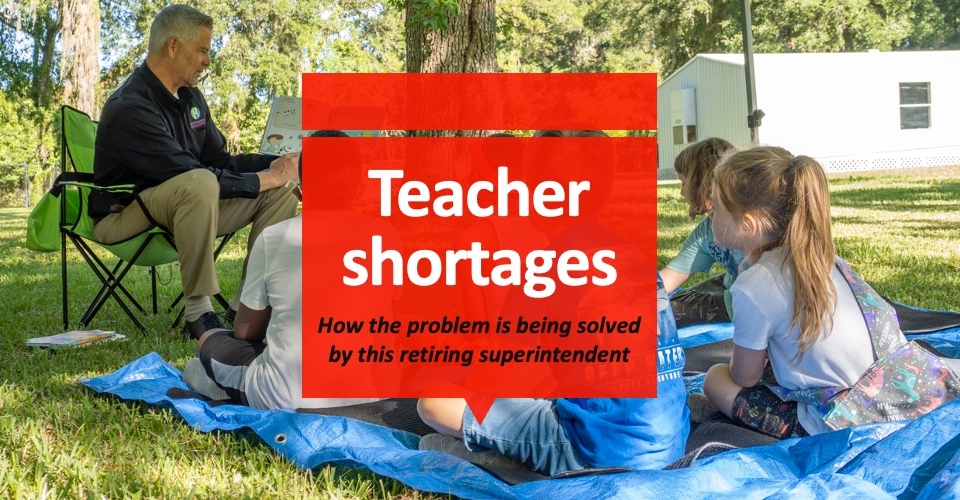Since the 1980s, conversations with high school students on post-graduation long-term career and financial success have focused on the need to complete a four-year degree. However, technical education and trade careers have been missing from this conversation. In fact, according to the 2023 Post-Graduation Readiness Report by YouScience, 30% of high school graduates didn’t even know about these career and educational options.
These programs cover more than traditional hands-on careers such as mechanics, plumbers and electricians. Today, they extend into evolving fields such as wind energy, aviation mechanics, CNC machining, robotics and automation, hybrid and EV automotive and diesel repair, welding, HVACR and many more. Roles in fields like these are expanding career choices beyond white- or blue-collar to include a new breed, the “skilled-collar.”
As parents and educators, we can help today’s students find the path that fits their interests and goals, not someone else’s expectations, by encouraging them to consider a wider variety of education and career choices than currently done.
Beginning career exploration in middle school and junior high
Today, career exploration often starts in high school. However, shifting to middle school and introducing boys and girls to the diverse, skilled-collar career landscape lets them embark on self-discovery and explore interests and strengths they may never have considered or known about. Many hands-on science, technology, engineering and mathematics education and career options didn’t exist just a generation ago.
A few excellent resources that exist to involve middle school and junior high school students in these fields and potential careers include:
- SkillsUSA is a nonprofit organization that offers resources for career and technical educators and students interested in hands-on careers in more than 130 fields. Curriculum resources and information on scholarships and competitions are available online for middle school, high school and college-level teachers and learners.
- TechForce Foundation is a nonprofit committed to career exploration and workforce development for technician professionals. It offers free resources for students, educators and schools through its TechForce™ network, including $4 million in scholarships and grants, training, local career-focused events, job postings, contests, opportunities to connect with industry and more.
- The National Association of Manufacturers (NAM) promotes manufacturing careers, including many skilled trade jobs. NAM’s website includes videos, infographics, lesson plans and other resources for educators and students.
- The U.S. Department of Labor’s CareerOneStop website offers a wealth of information on skilled trades careers, including wages, training and job outlook. Also, the Department of Education’s Career Clusters group different trade careers together and provides information on the skills needed for each cluster.
Shifting perspectives to include these other post-secondary education alternatives is crucial—not just to show students what options exist but to fill the employment demand in many industries today.
Exploring the breadth of post-secondary educational options
Factors fueling Gen Z’s increased interest in skilled trades include labor shortages (75% of employers globally report having challenges filling roles), significant growth in technological trades and the rising cost of four-year colleges.
‘Talking Out of School’ podcast: How to reframe the teen brain
The average cost of attendance for a full-time student living on campus at a public four-year school was $21,337 during the 2020-2021 school year, and costs were more than double this for those attending private four-year universities. Secondary students are beginning to realize that the cost of a four-year education may no longer be realistic or representative of the best path. In fact, according to a 2024 report from The Burning Glass Institute, over half of college graduates were underemployed one year after completing their degree.
Meanwhile, trade programs that last two years or less offer targeted technical education for students who want a hands-on career. These programs may also benefit from lower total education costs, shorter lengths and employment demand. Even at the higher end, a technical education is often a more economical choice.
Career paths in skilled-collar fields
Trade programs offer a clear advantage: they equip graduates with targeted technical skills for specific in-demand jobs. With 9.5 million job openings in the U.S. and 6.5 million unemployed workers, the skills gap is one major factor preventing companies from filling roles.
The Bureau of Labor Statistics estimates the national annual average job openings between 2022 and 2032, including openings due to net employment changes and net replacements, for technicians in these occupations to be:
- Automotive service technicians and mechanics: 67,000+
- Aviation technicians: 10,000+
- Bus and truck mechanics: 24,000+
- Energy technicians: 39,000+
- HVACR technicians: 37,000+
- Electric-mechanical and mechatronics technologists and technicians: 1,000+
- Welding technicians: 42,000+
- Non-destructive testing technician: 7,000+
Long-term skilled-collar career evolution
While higher education institutions play a vital economic role, a skilled-collar job can open the door to a fast-track pathway to entrepreneurship. This, too, appeals to a generation in which 60% are interested in starting and running their own business. More than one in six skilled tradespeople create their own businesses and 20% become partners in a business.
Working in tandem, traditional higher education and post-secondary trade schools can help meet the needs of today’s and tomorrow’s economy by ensuring students are exposed to the full range of careers available.









